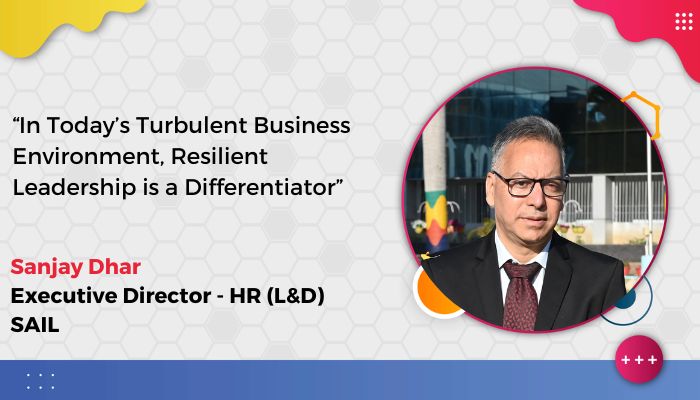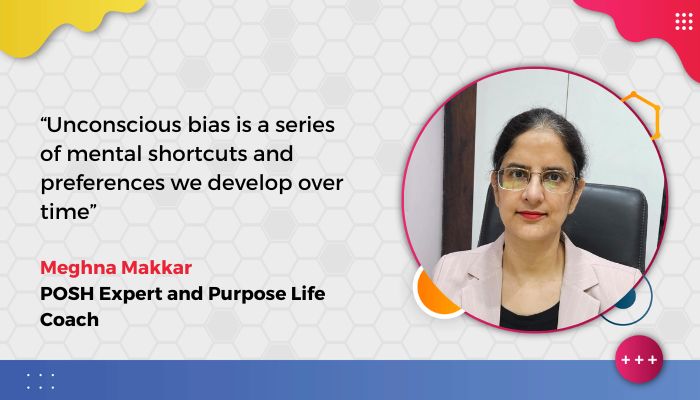By Sanjay Dhar, Executive Director, (HR-L&D), SAIL
The power of learning from experience
“We are the sum total of our experiences. Those experiences—good and bad—make us who we are.” — Maya Angelou
Leadership is not shaped in classrooms or boardrooms alone; it is most deeply formed in the fires of experience. Significant moments — the celebrations of achievement as well as the stinging realities of failure — leave emotional imprints that, when reflected upon, become sources of wisdom. These experiences act as turning points. They shape judgment, strengthen inner conviction, and refine a leader’s way of engaging with people and challenges.
Warren Bennis introduced the idea of leadership crucibles to describe intense, transformative experiences that fundamentally shape a leader’s character and capacity. These crucibles are often moments of deep challenge, adversity, or testing — situations where leaders are pushed beyond their comfort zones and must confront their own limitations, values, and resilience. Rather than breaking them, these experiences refine leaders, much like metal which is purified in fire. What distinguishes great leaders, according to Bennis, is not the absence of hardship but their ability to interpret these crucible moments as learning opportunities, emerging from them with greater clarity of purpose, emotional depth, and authenticity in their leadership.
Enhancing self-efficacy through positive experiences
“Remembering that you once triumphed will help you face your new challenge with courage.”
— Albert Bandura’s self-efficacy principle (paraphrased from “Self-Efficacy: The Exercise of Control”)
Positive experiences such as leading a successful project, earning trust during a crisis, or witnessing a team rise beyond expectations serve as powerful reinforcers of identity. They tell a leader, “This is what I am capable of.” These moments build a quiet inner confidence that no external training can replicate. They also create mental models — almost like internal playbooks — that leaders instinctively refer to during future challenges. When pressure builds again, they draw from these earlier victories, not just to make better decisions, but also to transmit a sense of assurance to their teams: “We have done it before. We can do it again.”
Growing vertically through “negative” experiences
“Failure is simply the opportunity to begin again, this time more intelligently.“ — Henry Ford
It is often the difficult and uncomfortable experiences that shape leaders most profoundly. A failed initiative, a conflict that escalated, a decision that backfired — these are not just setbacks; they are mirrors. They reveal blind spots and expose the gaps between intention and impact. Leaders who have failed know what it feels like to be uncertain, to face criticism, or to carry responsibility for outcomes that did not materialize. And it is precisely this emotional memory that gives rise to humility, empathy, and maturity. Such leaders become calmer during future adversity because they have already met their own vulnerabilities and emerged wiser. Such experiences are triggers for “vertical growth” that comes from examining basic assumptions, and why we do certain things, and how we think as compared to “horizontal growth” that comes from acquiring more information. It is vertical growth that helps leaders evolve into a higher orbit.
Reflection as the secret sauce for learning and growth
Experience alone does not guarantee growth. The differentiating factor is reflection. When leaders pause to ask, “What did this teach me about myself, about others, about leadership?” they transform raw experience into leadership capital. The moment becomes a resource they can draw upon again and again.
This reflective use of memory is not just an individual process; it holds immense value for teams as well. Teams too have collective memories — of late-night recoveries, moments of near failure, unexpected wins, or breakthroughs achieved through collaboration. When leaders bring these memories alive through storytelling, they do more than recall the past — they renew collective belief. They remind people of their shared capability and resilience. This is especially powerful in uncertain times. A simple reminder, “We’ve faced tougher situations before and emerged stronger,” can shift the emotional state of a team from anxiety to purposeful energy.
Great leaders share their stories — not as polished victories, but as honest journeys. When they speak of doubt, effort, turning points, and eventual clarity, they offer more than motivation; they offer authentic connection. Their story becomes an invitation: “You too can grow through your experiences. You too can lead with strength.” In doing so, they normalize struggle and position growth as an ongoing leadership discipline rather than a destination.
Leadership is not a straight path but a narrative — one made meaningful by the moments that tested and transformed us. Experiences shape leaders, but only leaders who choose to learn from them. Those who recognize the power of memory — both personal and collective — discover that the past is not a weight to carry, but a reservoir of resilience to draw from.
The neuroscience behind emotional memory
Our brains are wired to retain emotionally charged experiences more vividly than neutral ones. The amygdala, which processes emotions, works closely with the hippocampus, responsible for memory consolidation. As a result, emotionally significant events — especially those involving success in the face of adversity — become mentally “sticky.”
This matters for leadership because these memories are not just reflections of the past; they are psychological resources leaders and teams can draw upon in the present.
According to psychologist Albert Bandura, “mastery experiences” — moments when people succeed despite difficulty — are the most potent source of self-efficacy. And when those experiences are vivid and emotionally meaningful, they become tools for resilience and belief.
How leaders can harness memory for resilience and self-efficacy
Leaders can intentionally recall moments when they or their teams succeeded under pressure. Journaling these stories — with emotional detail, obstacles, and actions — turns them into ready resources.. When doubt or fatigue creeps in, revisit these memories to re-anchor belief. By recalling shared wins, successful pivots, or rapid recoveries and encouraging emotional recollection, stories become part of the team’s identity — reinforcing resilience and shared self-efficacy. Great leaders share not only polished successes but also the messy middle — the fear, the course corrections, the grind. When these stories are shared with emotional honesty, they help others frame their current challenges as part of a bigger narrative of growth.
In high-performance environments, the focus is often on the next quarter, the next goal, the next fire to put out. But sometimes the best way to move forward is to look back — not to dwell, but to draw strength. When leaders and teams intentionally revisit vivid memories of past resilience, they activate a deep well of belief: “We’ve been tested before. We’ve adapted. We’ve delivered. We can do it again.”
That is not nostalgia. That is a strategy.
In today’s turbulent business environment, resilient leadership is a differentiator — and memory, used wisely, is a competitive advantage.
About the author
Sanjay Dhar, Executive Director (HR-L&D), SAIL, is heading the Management Training Institute, Ranchi, which is the apex L&D centre of Steel Authority of India Limited (SAIL), a Maharatna and a leading Steel Company of India. He is responsible for the L&D strategy and cultural transformation in the company through various capability development and cultural transformation initiatives. He is also a qualified coach and trainer and has designed and executed many leadership development initiatives and provided consultancy in performance improvement to organizations beyond SAIL. You can connect with Sanjay here.
Disclaimer: The opinions and views expressed in this article, including any accompanying data, are the sole responsibility of the author and should not be construed as reflecting the official policy or position of India Employer Forum






